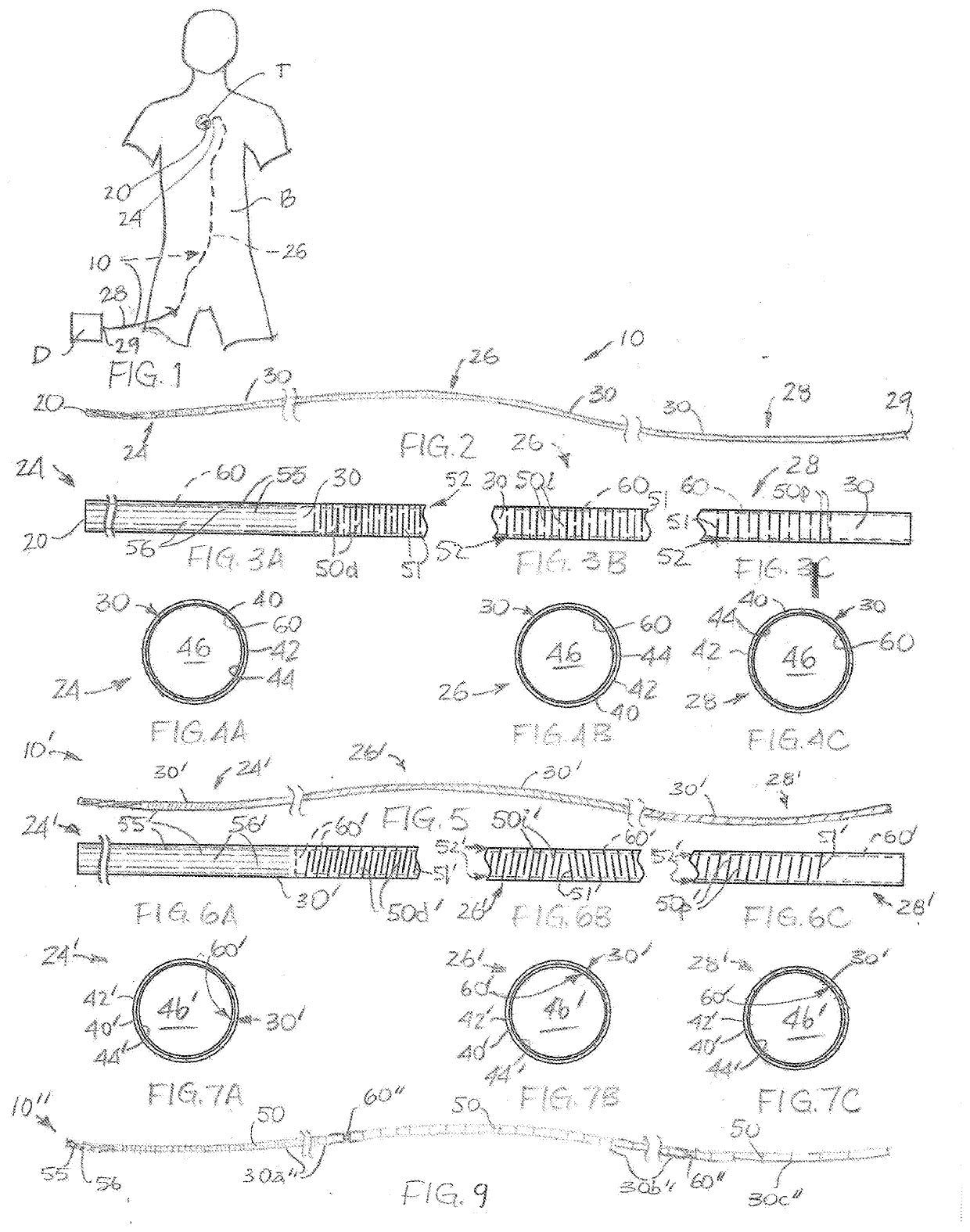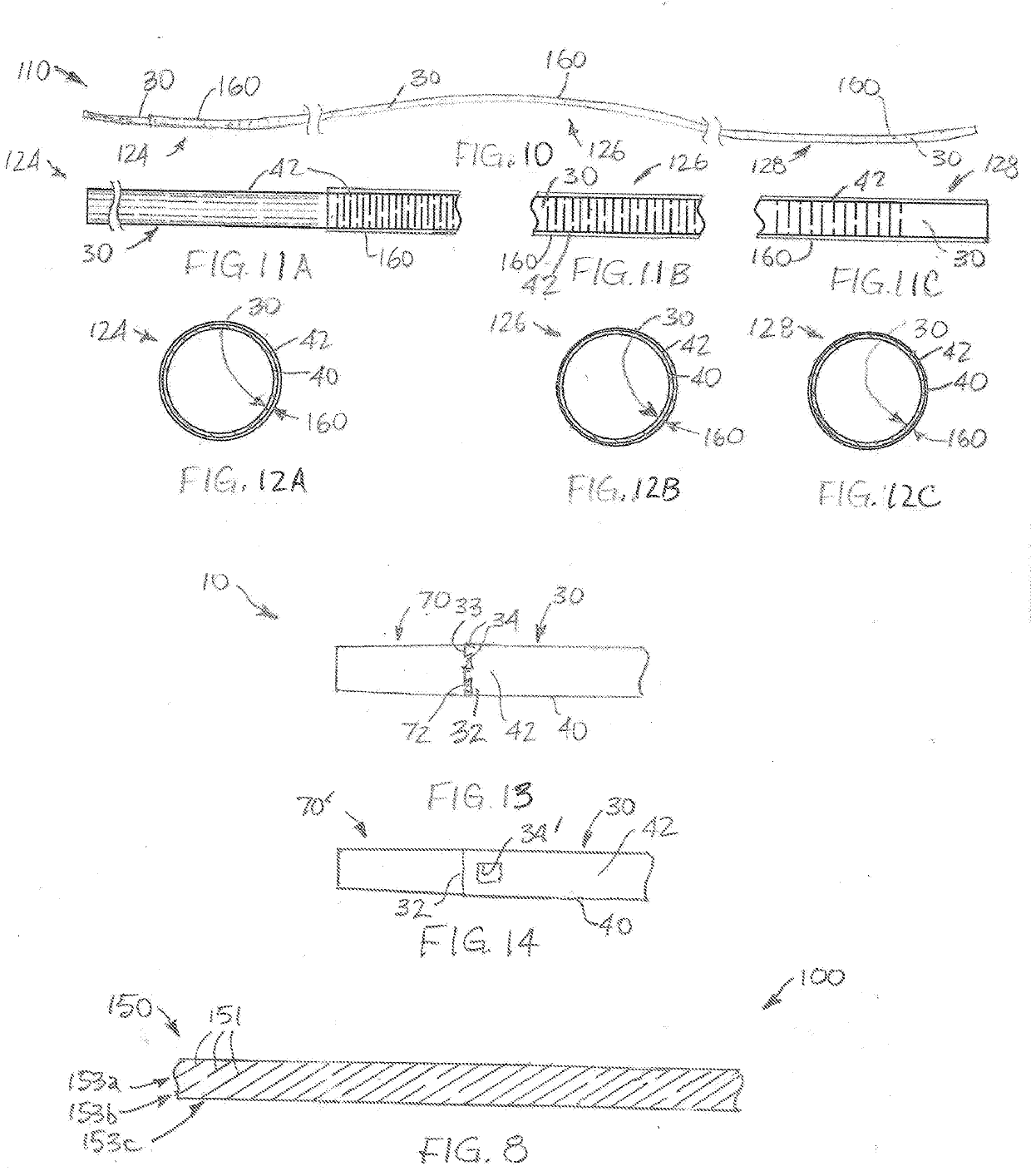Hypotube catheters
a catheter and hypotube technology, applied in the field of catheters, can solve the problems of limited length of microcatheters, risky use of standard angiography catheters, limited use of microcatheters, etc., and achieve the effects of increasing ease, lubricating, and smoother
- Summary
- Abstract
- Description
- Claims
- Application Information
AI Technical Summary
Benefits of technology
Problems solved by technology
Method used
Image
Examples
Embodiment Construction
[0042]FIGS. 2-4C illustrate an embodiment of a catheter 10 that includes a hypotube 30 and a liner 60. The hypotube 30, which defines an exterior portion of a majority of a length of the catheter 10, extends along substantially an entire length of the catheter 10. The liner 60 defines an interior of a majority of the length of the catheter 10.
[0043]Along its length, the catheter 10 includes a distal end 20, a distal portion 24, an intermediate portion 26, a proximal portion 28, and a proximal end 29. As shown in FIG. 1, the distal end 20 of the catheter 10 is capable of being introduced into a body B of a subject and advanced through the body B of the subject (e.g., along a pathway, such as the subject's blood vessels, or vasculature, other vessels, or other tubes or passages) to a target site T, where a procedure is to be performed. Upon advancement of the distal end 20 to the target site T, the procedure that is to be performed may be performed using the distal end 20 or the dista...
PUM
 Login to View More
Login to View More Abstract
Description
Claims
Application Information
 Login to View More
Login to View More - R&D
- Intellectual Property
- Life Sciences
- Materials
- Tech Scout
- Unparalleled Data Quality
- Higher Quality Content
- 60% Fewer Hallucinations
Browse by: Latest US Patents, China's latest patents, Technical Efficacy Thesaurus, Application Domain, Technology Topic, Popular Technical Reports.
© 2025 PatSnap. All rights reserved.Legal|Privacy policy|Modern Slavery Act Transparency Statement|Sitemap|About US| Contact US: help@patsnap.com


